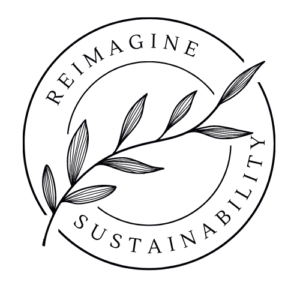Do you know what’s terrifying? We have the knowledge and resources to prevent societal and natural catastrophes from happening, but leaders do the opposite leading to devastating consequences. What is a good leader? What sort of leaders do we need? What are the qualities of a good leader? More specifically: What does it take to become a sustainable leader?
During my research for this article, I found many articles which explained the role of a sustainable leader from the business perspective.
However, the business world shows severe signs of a business-as-usual mindset. Quiet is the opposite of what the world needs sustainable leaders to be. Economic activities of exploitation and destruction (environmentally as well as socially) brought us into this misery.
So, let’s look into what it takes to be a sustainable leader.
What is sustainable leadership?
Let’s look at the two words separately first
Sustainable – in its simplest form – means that parts of a system maintain their function at a certain level.
Leadership refers to leading a group of people or an organisation.
Related:
How An Improved Definition Of Sustainability Will Actually Save The World
Accordingly, sustainable leadership refers to a person in a leadership position who is responsible for leading a group of people or an organisation and enabling them to continue their order of operations.
From a business perspective, sustainable leadership is a management solution that provides solutions for environmental, social and economic challenges. Interestingly, most challenges derive from economic activities.
However, it’s not an easy task considering that sustainable leaders do not only need to revoke past unsustainable decisions and their negative impacts. Additionally, they need to revise those impacts, restructure operation processes and implement solutions to achieve positive environmental and social outcomes while keeping the business running.
Businesses – in the modern and capitalistic world -are run without considering the environmental and social consequences. It is the leader’s role to embed the business operations into sustainable, regenerative and just systems. In other words, the goal of sustainable leaders is to rethink the organisation’s role in the social and environmental context.
Money is not the only investment option
Sustainable leaders invest in a future where the natural environment thrives and societies prosper.
You might often hear or read that achieving sustainability is complex. Complex does not necessarily mean complicated. However, capitalism is also complex. It is socially more acceptable because it is ubiquitous. It is the norm.
A sustainability leader needs to develop a mindset of making sustainability mainstream. Making sustainability the norm and leading with good practices.
Sustainable leaders are eager to understand and embrace the growing complexity of the world. Often, you might read that sustainable leaders see people and the environment as integral parts of a business. Personally, I find this view misleading.
Here’s why: The focus is too much on the success of a business. Yet, a business cannot exist without people and well-functioning natural systems. No profit can emerge when there are no people or planets to use.

The mindset of a sustainable leader needs to put our planet and people first, and business second.
Examining 5 principles of sustainable leadership
Before we dive into the 5 principles of sustainable leadership, I want to introduce you to Andy Hargreaves and Dean Fink, two educators, who published the 7 Principles Of Sustainable Leadership.
Their definition of sustainable leadership goes as follows:
Sustainable leadership matters spreads and lasts. It is a shared responsibility, that does not unduly deplete human or financial resources, and that cares for and avoids exerting negative damage on the surrounding educational and community environment. Sustainable leadership has an activist engagement with the forces that affect it and builds an educational environment of organizational diversity that promotes cross-fertilization of good ideas and successful practices in communities of shared learning and development.
This definition shall help you set up your mindset to better understand the characteristics of a sustainable leader. Moreover, I summarised some principles down to 5.
Ecocentric, systemic and long-term mindset
A sustainable leader needs to be ecoliterate. They need to understand the dependence of businesses on well-functioning and healthy natural systems and thriving societies.
For too long, businesses have operated disconnected from the natural world. The exploitation of resources and human labour is taking its toll.
A sustainable leader understands interconnectedness (helpful concepts are the planetary boundaries, doughnut economies, triple bottom line etc.). It’s not only about understanding our part in the natural world.
Sometimes it’s not about improvement, but implementing strategies to reconnect with and care for what provides everything we need to live.
It’s difficult to imagine a world where human-built spaces reconnect with the natural environment. Therefore, an important skill is to adapt one’s worldview. What you might perceive as normal, but is highly destructive should not be normal, right?
Challenging the What Is – status-quo – and continuously moving towards more mature and sustainable methods to run a business is part of the role of a sustainable leader.
Cross-boundary, leadership networks
No one has to tackle challenges on their own. It’s in everyone’s interest to reverse the damage of centuries of poor leadership and decision-making. The beauty of humanity is its diversity – a strong, but forgotten or not taken seriously similarity with the natural world.
Multidisciplinary collaboration supports sustainable leaders with a range of skills and knowledge. Although collaboration can come with many obstacles, the rewards are gratifying.
A collaborative network does not only have to be B2B. The quadruple helix model visualises the opportunities for cross-sectoral collaboration between businesses, government, academia, and the public.
The decision power should not only sit on the shoulders of people in power. A common vision of all actors combined might add to the complexity of exploring, developing and implementing sustainable systems.
Nonetheless, a sustainable future needs fertile and diverse ground for everyone to flourish – leaving no one behind.
Building a network(s) of diverse stakeholders is crucial. Sustainable leaders need to learn how to create safe, just and creative spaces for everyone to contribute to the matter.
Influence without authority
Authority is the source of misery. Hopefully, authoritarian leadership practices will soon become a thing of the past. Sustainable leaders build relationships, not hierarchies.
Two forms of leadership are authentic and transformational leadership. Authentic leaders act according to the business’s purpose and values. They are honest and treat their team with integrity.
A transformative leader follows a shared vision and enables the team by encouraging and inspiring. They model the way and challenge the process.
Handling complexity
Complexity does not necessarily mean complicated. A sustainable leader is comfortable working with complexity. Yet, if they follow sustainable principles and put work into understanding the business’s role in the greater good scheme of things and building valuable networks, complexity can turn into opportunities.
Creating opportunities for all – within and outside of an organisation.
Generating wealth goes beyond accumulating monetary profit. Consequently, wealth is only limited by the lack of creation. It is the sustainable leader’s role to empower, inspire and enable everyone to create a future worth looking forward to.
Recognising the importance of leading oneself
Quick question: While reading the principles, do you feel like leaders have to give up on themselves, making their whole life about creating a sustainable future?
During my research, I felt there is not enough emphasis on maintaining the well-being of sustainable leaders. Many expectations, not enough support and kindness.
A sustainable leader has the well-being of everyone in mind and they should not forget themselves. Self-care and being kind to oneself is a practice that should not be neglected.
The sustainability journey can be a very rough one. Building personal resilience as a sustainable leader is non-negotiable. Significant and draining obstacles can occur from stakeholder conflict, setbacks and burnout.
Business is not life. Sustaining one’s sanity is part of becoming a sustainable leader – to nourish your inner world to give back to the outer one.
Importance of sustainable leadership
Increasingly, more people demand businesses to become or be sustainable. They are less likely to compromise. Environmental and social sustainability are at the forefront for people to apply for a job.
Within organisations, more people demand businesses restructure their activities and increase sustainable impacts. Engaging teams is not solely a motivation of a monetary reward (although fair and adequate wages are part of running a sustainable business), doing more good and less harm becomes rapidly more meaningful.
The other part of the coin is that many sustainable leaders struggle to motivate and engage their teams. Necessary to understand: for decades, the business world fostered a mindset of subservience, obedience and hierarchies. Little room left for excitement, creativity and self-expression.
Depression and anxiety are symptoms of a very hostile environment. Unfortunately, a lot of businesses foster this environment. Again, it’s not an easy task for a sustainable leader to break the barriers and create safe spaces.
The good news is things can change. Mindsets can change. Engagement evokes. Exploring, developing and implementing solutions for the planet and people to thrive in our world can turn into a massive pool of opportunities.
I can help you with that.
The hand that leads you to success
Implementing sustainability thinking into your business structure does not have to be complicated. Combined efforts with a leading hand can bring you quicker results on your sustainability journey.
Shifting culture, shaping long-term solutions and thinking dynamically will dismantle business-as-usual approaches. Your sustainability challenges cannot be solved with the same mindset that created them in the first place.
A foretaste of my work: FREE, downloadable Sustainability Mindset Guide
Together we can explore and develop a sustainability roadmap fitted to your needs. You will grow exponentially in confidence as a sustainable leader and create the impact you want to see – benefiting the planet, people, prosperity, peace and partnership. (The 5Ps of the SDGs)
Your knowledge and skill set will expand by implementing approaches of systems thinking, sustainable collaboration, clear value and purpose and an action plan.
Let’s create a thriving and prosperous future!




0 Comments